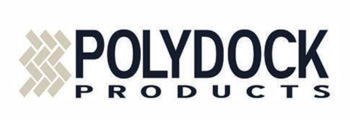Aug 25, 2020
Lightning & Boating don’t mix.
Lightning and Boating don’t mix. Spring and Fall bring the strongest storms of the year.
Do you have the proper PFD (personal floatation device)? How about boaters’ insurance? In the middle of a storm is NOT the time to think about these things.
Boat safety should be an ingrained part of any boating excursion, long or short.
Before you head out for a cruise, check the current weather and the predictions. Most smartphones allow you to see the weather at a moment’s notice. Be sure to check it frequently.
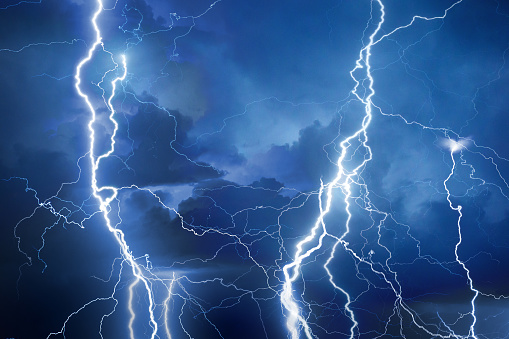
Lightning
Suppose you are caught by surprise while on the water, head back home immediately. If the storm is between you and your home or a marina, head for another protected area onshore. You do know where they are because you studied a map before you left – Right!!
What Lightning Does to Boats and Boaters
You’re floating on a body of water in a boat. You notice the dark clouds approaching. What do you do?
First, get PFD (life preservers) on everyone.
Next, Remember, lightning strikes the tallest point on a boat (the lighting rod). As you stand in your boat – where is that lightning going to hit?
Most boats contain large amounts of metal and other conductive materials, making them an excellent target for lightning.
With a sailboat, the tallest point would be the mast. But with a bass boat, this could be the fishing chair or YOU sitting in it! No boat is immune. You don’t have to be a genius to figure out that water, wiring, and lightning do not mix well!
Smaller boats are subject to extensive damage because there are fewer places for the lightning to go. They’re also more dangerous for the passengers during an electrical storm.
Lightning can completely wipe out a boat’s electrical system and destroy the engine. It can blow holes in the hull, which causes the boat to take on water. Sinking is not out of the realm of possibilities.
Isn’t a boat Lightning-Proof?
Unlike a car, a boat does not have four rubber wheels insulating it from “ground.” Boats are potential targets whenever they are on the water.
Lightning always takes the shortest path to “ground.” On the water, “ground” is the water’s surface. The tallest object on a boat that contains metal or any conductive materials (like your body) will serve as a lightning rod.
There’s no way to predict where it will go. On larger boats, a bonding system can send the strike via a conductor to an underwater metal plate, usually constructed of copper or some other non-corrosive metal.
A bonding system uses arrestors to protect electronic equipment while providing a safe path for the lightning strike.
Caught in a Thunderstorm – what now?
If you’re in a thunderstorm out on the water, seek shelter in your boat’s cabin, if it has one. Remember, you might be the highest, conductive point that lightning sees.
If the vessel doesn’t have any shelter, remain as low as possible. Find the lowest part of the boat and try to get into the center of the boat. Don’t touch ANY metal or electronic components. Don’t be the lightning rod.
Make sure everyone on board puts on a life jacket. Here’s an excellent article to read about PFD written for kayakers, but it applies to all boating situations.
Next, decrease the speed of the boat. Don’t forget to unplug any electrical appliances or devices.
Remember, you can’t have thunder without lighting, even if you don’t see it.
Remember, boats can also be struck by lightning while docked. Leave the boat and take shelter (Not under a tree).
Will MY Boat Insurance Cover Lightning Damage?
Boat insurance should cover a boat damaged by lightning. Insurance usually covers damages done by fire, theft, lightning, wind, vandalism, and other events.
Call your licensed agent and go over your list of options and the cost of each. It’s better to be slightly “over-insured” than not to have enough coverage. A few extra dollars a month in insurance premiums could make a big difference in your coverage.
The most expensive boat insurance on the market might not necessarily be the best.
In Conclusion
In the event of a storm, get off the water, and stay as low as you can.
Tell Your Friends & Family
Have friends or neighbors you believe should see this article? Email them a link to this article – and Thank you!
You can visit Pier & Waterfront Solutions on Facebook also.
Don’t Forget – PWS is the expert when you have a waterfront problem!
Where is Pier & Waterfront Solutions?
Located at 7325 St. Hwy 57, we are about 3 miles south of Sturgeon Bay, and 1 mile past the intersection of Cty MM (heading north). Look for the intersection of Idlewild Road and Hwy 57.
ARE WE OPEN?
Pier & Waterfront Solutions has remained “open.” We have implemented measures to ensure the safety of our employees and visitors. As of Aug 1st, Wisconsin mandates the use of face masks. It’s the only known method to control the spread at this time.
While all this is going on, we are working to maintain the trusted service you expect. That’s important to us.
We are conducting as much business as possible by email, text, or phone. Site visits will continue as usual. When in-person contacts are necessary, we follow “social distancing” guidelines as closely as possible.
Call, message, or use this simple request form to get answers and quotes.
Thank you for allowing us to work with you – safely.
Let’s all stay safe!
Jun 16, 2020
A Boat Lift Safety Lesson
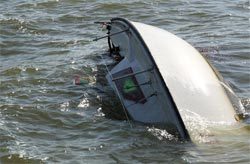
My lift cable broke…and I can’t ….
Proper boat lift safety means you won’t have to learn the tough lesson pictured here. If you apply these recommendations, you can relax and enjoy your boating experience.
Failure to follow these safety suggestions may result in damage to your boat or even personal injury.
Boat Lift Safety = Never exceeding the Ratings
The rated capacity of any lift is the maximum capacity, and you should never exceed that amount.
Boat weight INCLUDES more than just the published weight of the boat. It also includes the weight of fuel, water, and equipment. After all, you will be lifting all of this when you raise your boat. It adds up very quickly!
Plus, we recommend that you allow at least a 300-500# margin of error when you calculate the boat weight. See also: Sizing a Boatlifts: How to select the correct Boat Lift.
If you ever hear a salesperson say, “You can easily go 40% or 50% over that rating without a problem”. You are at risk of being the owner of the boat above if you follow that flawed thinking.
What’s the real story?
Lift cables are rated much higher than the rating of the boat lift. As an example, (using imaginary numbers) your boat lift has a 4,000# rating, it could have cables rated for 6,000# to 8,000#.
The cable rating may be 6,000#, but ONLY if the wires are in perfect shape – meaning no burrs, kinks, frays, or rust. These defects reduce the load capacity of the cables.
The lift racks are correctly rated for the weight regardless of the cable ratings. If someone is trying to sell you a 4,000# lift and telling you that it can handle up to 4,700# – WALK AWAY!!
The load must also be “balanced” on the rack for proper boat lift safety. (More on this later)
Lift cables fail without warning
Sorry!! Cables don’t “creak” or “groan” as a warning of impending danger. The only sound you hear is a loud “snap” followed by the sound of your boat hitting the water.
In a storm, you want to get your boat as high above the water as possible. Yet, raising a boat until the lifting platform or rack hits the frame is NOT the way to do it.
Hitting the frame is an all too common occurrence. Ask yourself, if raising the boat that extra ½” is worth snapping a cable. You risk damage to your boat and lift, or worse yet, personal injury.
Operate Lift Motors properly or break a cable
Properly used, an electric lift motor is a real back saver! I wouldn’t be without one. But you need to exercise extra care when using a lift motor. Shutting off a lift motor does not mean the lifting action will stop. What if it “drifts”?
For example, one brand of lift motor “drifts” after the motor stops. The “drift” potentially causes the lift rack and frame to jam together.
Cable failure, lift or boat damage, personal injury, or worse may be the result.
When the rack hits the lift frame, something has to give. The most likely culprit will be the cables. If you combine a damaged cable with a rack hitting the frame, you have a recipe for disaster.
OK, You Jammed the Rack & Frame! – What comes next?
You were distracted, and now the rack is jammed against the frame. A jammed rack means your next step is critical.
You’re in a hurry to release the pressure, but be sure you know which way the motor will go when you flip the switch.
If the rack isn’t going “DOWN,” damage occurs almost instantly. If it is a broken cable – your boat goes down – even faster!! Starting the winch or motor in the wrong direction could mean your boat will be in the water in an instant. Did I mention it won’t be floating?
Proper Positioning of the boat is part of boat lift safety.
As if a jammed rack wasn’t enough, did you know there are right ways and wrong ways to position your boat on your lift?
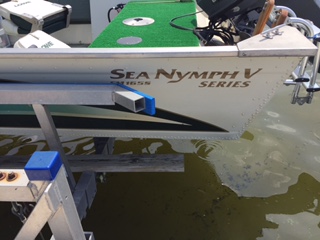
Boat stern overhanging too far
All lift ratings are based on a “balanced load.” In other words, the weight of the boat must be relatively equal on each end of the rack.
When you put the majority of the weight on one end of the rack, cable breakage is more likely.
The heaviest part of any boat will be where the engine is mounted. That could be at the stern (outboards) or even near the middle of the boat (inboards).
A boat placed too far forward on the lift rack results in excessive weight on the “front” of the lift. Too far to the stern of the boat puts too much weight on the rear cables. If the cables have weakened by corrosion or fraying, you risk impending disaster.
What is the correct position for a boat on a lift?
You can determine the proper positioning of a boat by placing the stern of the boat within 12″ – 18″ of the rear lift rack. Now, raise the rack slightly out of the water.
Next, try to lift the bow end with your hands. If the boat weighs 3,500# and you can lift the front of the boat, you are either “Mr. Atlas” or the boat is positioned to the rear. If you can lift the bow at all, your boat is too far back. The weight is not evenly distributed across the four corners of the lift. Lower the boat and reposition it forward.
The boat shown here overhangs about 36″ from the rack and risking major damage. By placing the boat too far back on the rack, a majority of the weight is on the rear cables. What if those cables are weak from corrosion or fraying?
Does high water affect the positioning of a boat?
Yes, it does. In the example above, with the rear of the rack overloaded, the boat has only minimal weight on the front rack.
Your boat will float on a wave. When the bottom of the boat is “lapped” by a wave, it will try to raise the boat. With repeated lifting (or bouncing) the boat can work it’s way off the rack. It will try to go go to the rear. Eventually, the boat will literally “bounce” right off the lift.
With a balanced boat, you have a better chance of the boat staying on the rack.
Align the boat in the same position each time.
So, now you have repositioned your boat until you found a good position for a balanced load. What comes next?
It’s time to make a note of a fixed object on the boat and how it lines up with something on the lift. This is a good gauge for the next time you enter your lift. Always try to go back to this same position.
Summary
You now know the do’s and don’t of boat lift ratings and positioning for your boat. With this knowledge, you can Relax and Enjoy your boating experience.
Where is Pier & Waterfront Solutions?
Located at 7325 St. Hwy 57, it’s 3 miles south of Sturgeon Bay, and 1 mile past the intersection of Cty MM (heading north). Look on the right side, one mile north, at the next intersection (Idlewild Road and Hwy 57).
ARE WE OPEN?
During this time of uncertainty, Pier & Waterfront Solutions is staying “open.” We have implemented measures to ensure the safety of our employees and visitors. At the same time, we are working to maintain the trusted service that you have come to expect.
We are implementing these precautionary measures:
1. Conducting as much business as possible by email, text, or phone.
2. Site visits will continue but with limited in-person meetings. When in-person contacts are necessary, we will follow “social distancing” guidelines.
3. Our display yard is always open for you to examine at your leisure. All displays have a numbered, red tag on them. If you want more information or pricing, please reference that number.
That’s not all!
4. Some employees are working remotely, but they are always available by phone.
5. Any employee exhibiting symptoms or illness is sent home.
6. We provide estimates and invoices by email to make the process paperless and faster.
7. Crew starting times are being staggered to limit social interactions.
8. We keep the same crews together to limit cross interactions.
With these measures, we hope everyone will stay safe, and we will be back to normal operations soon.
What can YOU do to help us?
1. Please conduct as much business as possible via emails, messaging, and emails. This step protects everyone involved.
2. When you see our crews installing equipment, please practice “social distancing.”
So, YES – WE ARE OPEN!
Please call, message, or email us with any questions.
Thank you for allowing us to work with you.
Let’s all stay safe!
Contact:
Jerry @ (920) 493-4404 or Jerry@wisconsinpws.com – Commercial work & new/used Sales.
Dave @ (920) 905-2588 or Dave@wisconsinpws.com – Erosion control & shoreline work.
Jerry @ (920) 493-4404 or Jerry@wisconsinpws.com – Scheduling & Service work
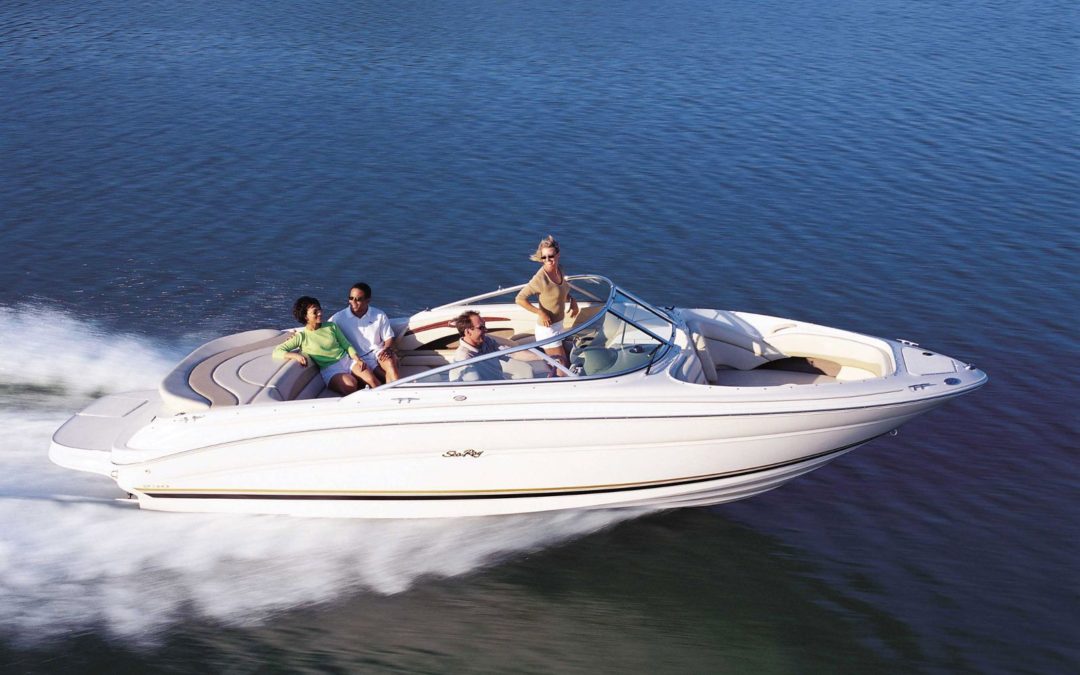
Mar 19, 2019
Is Your Boat Ready for Summer?
Will your boat be ready when Nature stops the snow and cold weather?
Spring weather is only about a month away. Start now to get ready for the boating season. It’s an exciting time of the year. Of course, Mother Nature still has a say in the timing of the warmer weather. However, eventually it will arrive and with it – Boating Season!
You went through all the steps in Fall to winterize your boat. Now, it’s just as important to prepare it for the summer boating. You can’t just drop your boat in the water and go.
Here is a list of things to check before the boating season starts:
Boat Batteries

Interstate Battery
Checking the battery is a given. When you do so be sure to check the following:
- Is it fully charged?
Are all battery terminals clean and secure?
Is there corrosion on the boat cables? If yes, it is time to replace them.
Are the cable clamps clean?
Charge your battery and check it with an amp meter. Check its health now and again in a month. Make sure to replace any battery that did not hold a charge.
Don’t wait until you are ready to launch your boat and find out the battery is weak or dead.
Check all Boat Lights
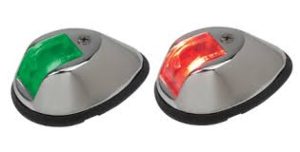
Boat Lights
Now that we know the battery is good be sure to check all of the lights. Plus, clean and tighten all connections. When the boat is bouncing on the water,
a loose connection can cause serious problems. Do you have replacement bulbs available in your kit? Ensure that all wires and connections are clean and tightened.
Electric System
- Inspect all electrical connections have clean, tight, corrosion-free connections.
- Remove corroded terminals and use a wire brush to clean them, along with all cable ends.
- Charge your battery and have it tested to ensure it can hold a charge.
Boat Trailer lights
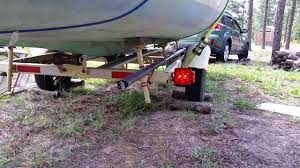
Trailer Lights
You’re checking the boat batteries and wires but how about the trailer wiring. Are the connectors clean? Is the connector on your vehicle clean?
There’s nothing worse than following a trailer with no lights or flickering lights.
Oil
If you didn’t change the oil before storing your boat in fall, be sure to do that before you use it in the spring.
Change the drive oil and the filter at the same time.
Is it time for a new oil filter? How about the gas filter?
Cooling System
Now it’s time to check your boat’s cooling system. In fall, you drained the cooling system to prevent the lines from freezing. Now it’s time to fill it again. Check all hoses for any cracks, especially at the clamps. Empty any raw water at the intake strainer.
Fluid Levels
- Check all fluid levels
- Be sure to change engine oil, oil filters and drive lubricants if you didn’t do it during fall weatherization.
Are the gas hose and connections free of cracks?
- Inspect the fuel system for leaks and pay attention to fuel hoses and connections.
- Evidence of a damaged fuel hose includes brittleness and cracking.
- Are the engine, exhaust, and ventilation systems functioning correctly?
- Don’t use fuel that contains more than 10% ethanol (E10) as it will damage your engine. Better yet – don’t use ethanol in your motor at all.
Remember to keep fuel in your boat over winter to keep moisture out of the fuel tank. We recommend the use of NON-ethanol gas over winter to help prevent gumming up the carburetor, plugs or fuel injectors.
Distributor
Check the distributor for corrosion. You can check the distributor by removing the cap and visually inspecting it. Make sure to re-attach it securely.
Belts
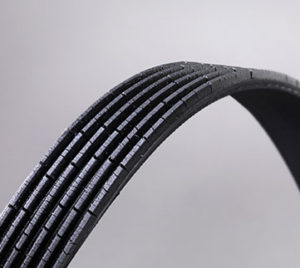
Worn Boat Belt
To determine if the belts need to be replaced, push down on them. Belts should only bend slightly when you do this. If a belt gives a lot when you apply pressure, it needs replacement.
Look for black soot around the timing belts and on the pulleys. If present it is a sign of a bad timing belt. The edges are rubbing against something. Keep in mind that the alternator belt tends to wear out the fastest.
Worn belts may leave a black residue or soot near a pulley and will fit loosely. Check the underside of the belt for cracks and signs of wear.
Propellers
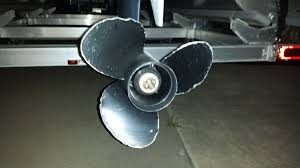
Damaged Prop
- Inspect propellers for pitting, cracks and distortion.
- Damaged propellers will cause vibration and damage to your drive train.
- Make sure the propeller is secured correctly, and have the bearings replaced when needed.
- Inspect the boat hull, looking for blisters, distortions, and cracks.
Drain plug
Be sure to install the drain plug before launching. Remove it when the boat is on your lift so water does not accumulate.
Finally, but not least
Check your life jackets. Are they in good condition? Are there enough on board for all potential passengers and are they the correct size?
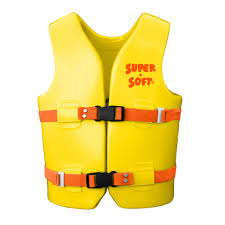
Coast Guard Approved Life Jackets
- Be sure all fire extinguishers are the correct class for your vessel and are charged and stowed in the proper place.
- Take advantage of any safety inspections offered by the US Coast Guard (USCG), USCG Auxiliary or US Power Squadrons.
- Follow this link for more information:
Happy Boating!
Do you have a friend that may be interested in this information? Please share a link to this page with them.
PWS is located at 7325 St. Hwy 57. That’s 1 mile North of County MM (Hwy 42) and 3 miles South of Sturgeon Bay at the Idlewild Road intersection.
Our staff is here year-round to assist you.













